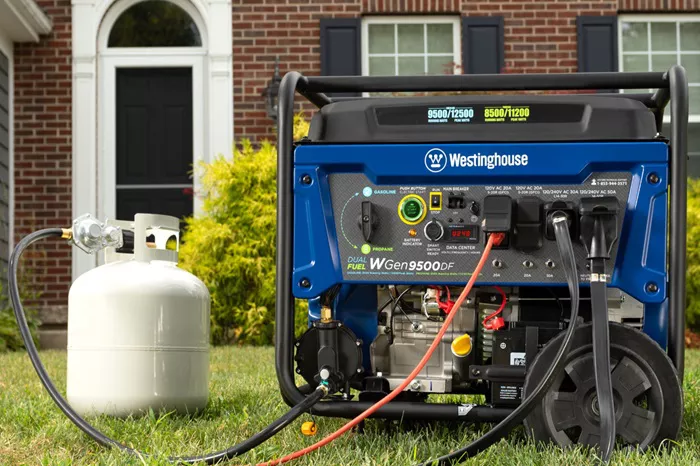Choosing the right generator for your home is essential to ensure you have reliable backup power during outages. The power output of a generator determines which appliances it can run and for how long. In this guide, we’ll explore how powerful a home generator should be, the factors affecting its performance, and how to calculate your household’s power needs.
Understanding Generator Power: Watts, Volts & Amps
Before selecting a generator, it’s important to understand the basic electrical terms:
Watts (W) : The unit of power that indicates how much electricity a device consumes.
Volts (V) : The electrical pressure that powers your appliances (standard U.S. homes use 120V or 240V).
Amps (A) : The current flow; you can calculate watts using the formula: Watts = Volts × Amps.
Generators are rated in watts, with two key power measurements:
Starting (Surge) Watts : The extra power needed when motors start (e.g., refrigerators, air conditioners).
Running (Rated) Watts : The continuous power supplied once appliances are running.
How to Calculate Your Home’s Power Needs
To determine the right generator size, follow these steps:
List Essential Appliances
Identify which devices you need during an outage (e.g., fridge, lights, sump pump, furnace).
Check Wattage Requirements
Most appliances have labels listing their wattage. If only amps are given, use:
Watts = Volts (120V) × Amps
Example:
- Refrigerator: 700W (running), 2,200W (starting)
- LED Lights: 10W each
- Sump Motor: 1,000W (running), 3,000W (starting)
Add Up Total Wattage
Sum the running watts of all devices and add the highest starting wattage (since not all motors start at once).
Example Calculation:
- Running watts: Fridge (700W) + Lights (50W) + Pump (1,000W) = 1,750W
- Highest starting watts: Pump (3,000W)
- Total needed: 1,750W + (3,000W – 1,000W) = 3,750W
A 4,000W generator would be sufficient in this case.
Types of Home Generators & Their Power Ranges
Generators come in different sizes, each suited for specific needs:
Portable Generators (3,000W – 10,000W)
Best for: Powering essential appliances during short outages.
Pros: Affordable, movable.
Cons: Requires manual setup, runs on gasoline/propane.
Inverter Generators (1,000W – 7,000W)
Best for: Sensitive electronics (laptops, TVs) due to clean power output.
Pros: Fuel-efficient, quiet.
Cons: Lower power output than conventional portables.
Standby Generators (10,000W – 50,000W)
Best for: Whole-house backup, automatic operation.
Pros: Powers entire home, runs on natural gas/propane.
Cons: Expensive, requires professional installation.
Factors Affecting Generator Power Choice
Household Size : Larger homes with more appliances need higher wattage.
Climate : Homes in hot/cold regions may need generators strong enough for HVAC systems.
Fuel Type : Gasoline is common but requires storage; propane lasts longer; diesel is efficient but noisy.
Runtime : Longer outages require generators with larger fuel tanks or dual-fuel capability.
Common Mistakes When Choosing a Generator
Underestimating Starting Watts : Leads to overload and generator failure.
Ignoring Fuel Efficiency : A powerful but inefficient generator may run out of fuel quickly.
Overlooking Noise Levels : Important if you live in a noise-restricted area.
Conclusion
Selecting the right generator depends on your home’s power demands. A 5,000W – 7,500W portable generator suits most households for essential appliances, while a 20,000W+ standby generator can power an entire home. Always calculate both running and starting watts to avoid overload.
By understanding your power needs and generator types, you can ensure reliable backup electricity during emergencies. If unsure, consult an electrician for a professional load assessment.
This guide provides original, expert-backed insights while keeping the language simple for easy understanding. The structure helps with SEO, and the detailed explanations ensure readers make informed decisions.

